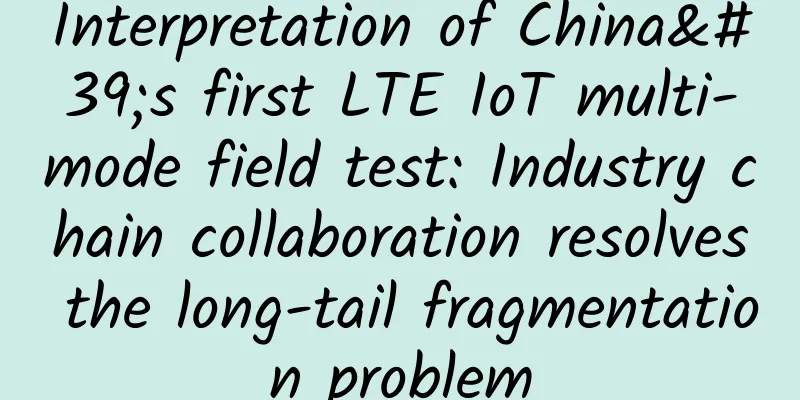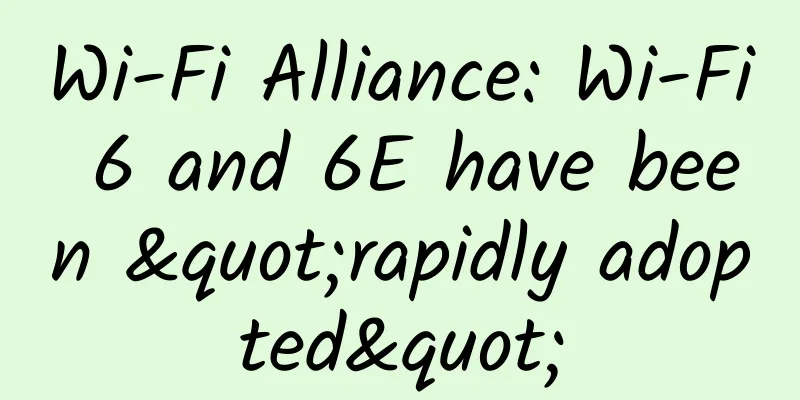9 misunderstood truths about 5G that many people have gotten wrong

1. Does 5G base station have high radiation?5G, like the previous 4G and 3G, is a mobile communication technology. There is essentially no difference in the intensity of electromagnetic radiation, and operators need to comply with the same standards when building networks. my country's "Electromagnetic Radiation Protection Standards" stipulate that the average power density limit for the public's electromagnetic radiation exposure for any continuous 6 minutes is 40 microwatts per square centimeter, which is more than 10 times stricter than countries and regions such as the United States, Japan, and the European Union. In fact, the towering signal towers of base stations may look scary, but by the time the signal reaches the mobile phone, it is already at its weakest. Taking signal superposition into account, operators usually control the signal to around 8 microwatts/square centimeter, which is far below the national standard requirements. Many people may not realize that although mobile phones may look small, they are meant to be held close to the ear to make calls. In fact, the intensity of electromagnetic radiation is greater than that of base stations. Mobile phone manufacturers also need to comply with relevant standards and limit radiation within a safe range.
my country's mandatory standard "Local Exposure Limits of Electromagnetic Radiation from Mobile Phones" stipulates that the average electromagnetic radiation energy absorbed by any 10 grams of biological tissue for any continuous 6 minutes shall not exceed 2 watts/kilogram. This standard is the same as the European requirement. In other words, 5G base stations and 5G mobile phones follow the same standards as 4G, and the electromagnetic radiation will not be stronger than 4G, so you can use it with confidence. 2. Does 5G require large channel bandwidth?From the perspective of 5G enhanced mobile broadband, the peak rate must be able to reach 20Gbps, so 5G does require extremely large channel bandwidth. For example, China Telecom and China Unicom each have 100M bandwidth on the 3.5GHz band, and China Mobile has 160M bandwidth on the 2.6GHz band, which is several times the 10M to 20M bandwidth in the 4G era. If it is the millimeter wave band, each operator can even get 800M to 1000M bandwidth. However, these medium and high frequencies have weak coverage capabilities, require many sites and expensive equipment, and are generally only used to cover urban areas and hot spots. For suburbs and rural areas, other frequency bands are needed to provide wide coverage. These frequency bands used for coverage are generally re-cultivated from the existing 3G and 4G networks, and the bandwidth is generally not large, and 20M is good enough. In fact, the agreement stipulates that 5M bandwidth can also be used for 5G, but the speed is not much different from 4G. Through joint construction and sharing, China Telecom and China Unicom were able to create a large bandwidth of 40M on 2100M. The 30M of China Radio and Television on 700M is also the only "super-large bandwidth" in the world. In the end, four companies shared it. 3. Is Massive MIMO technology standard in 5G?In fact, there are many frequency bands for deploying 5G, including the low-frequency 700M less than 1GHz, the traditional FDD intermediate frequency 1800M and 2100M, the TDD intermediate frequency 2600M and 3500M, and the newly introduced millimeter wave. For low frequencies, due to the long wavelength and large antenna size, it is difficult to implement large-scale antennas, and base stations are still mainly 2T4R or 4T4R. For FDD intermediate frequency, 5G is generally upgraded based on 4G base stations and continues to use 4T4R; for TDD intermediate frequency, as the main capacity layer of 5G, it does make extensive use of Massive MIMO technology with 64 antennas or 32 antennas, but for suburbs, 8T8R or 4T4R equipment is still used to reduce costs. For millimeter waves, a 4T4R enlarged-scale phased antenna array is generally used. The number of concurrent streams that can be supported is limited, and the gain mainly depends on beamforming and beam management, which is different from the intermediate frequency and is equivalent to a special Massive MIMO. In short, 5G does not necessarily have to use Massive MIMO. For the capacity layer, Massive MIMO technology is generally used to enhance the cell capacity, and for the coverage layer, 4T4R is generally sufficient. 4. Will 5G deploy a large number of small base stations?At present, the deployment of 5G is similar to that of 4G, with macro sites as the main base and micro sites as the auxiliary base. For ultra-high-capacity hotspots, such as stadiums, large gathering places, commercial streets, etc., small base stations will be used to supplement the heat, which is also easy to camouflage and hide.
For wide coverage, medium and high frequency bands will not be used extensively. Major operators have racked their brains to re-cultivate the medium and low frequency bands currently being used by 3G and 4G for 5G, such as the domestic 1800M, 2100M and 700M, etc. Operators always have to consider the cost issue and always want to make a profit after investing money. Therefore, the saying that 5G small base stations are everywhere will not appear in reality. 5. Does WiFi also support 5G?Many people often hear the term 5G WiFi, and have also seen the word 5G after the name of WiFi. Is there WiFi that supports 5G? In fact, the 5G in 5G base station refers to the fifth generation of mobile communications, and the G in it is the first letter of the English word Generation; and the 5G in 5G WiFi refers to the frequency band used by WiFi, which is 5G Hertz (Hz), which is different from the 2.4G Hertz frequency band used by traditional WiFi. The two "5G" may seem the same, but they actually have completely different meanings. The exact distinction depends on the context. In fact, they have little impact on our lives. 6. Are 5G base stations and mobile phones very power-hungry?Which is more fuel-efficient, a car or a truck? There is no doubt that a large truck consumes several times more fuel than a car, but the cargo it can carry is far beyond what a car can carry. This involves the concept of "energy efficiency". The capacity of 5G is several times that of 4G. On average, the energy consumed to send 1 bit of data is much less than that of 4G. It is generally believed that the energy efficiency of 5G is 90% higher than that of 4G. For example, with 1 kilowatt-hour of energy consumption, 300 ultra-high-definition movies can be transmitted and downloaded in the 4G era, and 5,000 ultra-high-definition movies can be transmitted and downloaded in the 5G era. As for the current 5G power consumption mentioned by operators, it is mainly because the base stations are turned on but there are not many users, consuming power but not continuously downloading data. After the 5G network traffic increases, the energy efficiency will naturally improve, which is why all major operators are committed to increasing the 5G retention rate. 7. The latency of 5G network is less than 1 millisecond?What is 1 millisecond latency? The conduction speed of human nerve fibers is 29 to 200 milliseconds. Studies have found that for real-time interactive games, a delay of 50 milliseconds does not affect the experience at all. When the frame rate of a movie is greater than 24 frames per second (one frame every 41.6 milliseconds), the human eye will feel that it is very smooth without any lag. Even if the sound is ahead or delayed by 40 to 60 milliseconds, people will not feel that the sound and picture are out of sync. If your phone accidentally falls out of your hand and you catch it with lightning speed, you may be proud of your quick reaction. But in fact, this process includes the complex process of nerve conduction and hand-eye coordination, and it may take more than 200 milliseconds. There are currently no commercial applications that require a latency of 1 millisecond.
In fact, the 1 millisecond delay mentioned by 5G is only the air interface user plane delay from the terminal to the base station. There are also processing delays, transmission delays, core network delays, application delays, etc. In the end, it is very good if the end-to-end two-way delay can reach tens of milliseconds. For industry applications with a time frame of less than 10 milliseconds, a series of technologies need to be combined to achieve the goal, including optimization of frame structure, sinking of the core network user plane, network slicing, edge computing, etc. 8. Does autonomous driving require 5G?In the early promotion stage of 5G, autonomous driving was frequently reported in the news. In fact, autonomous driving is not remote driving, and 5G is not a necessary condition for autonomous driving. The premise of autonomous driving is autonomous and safe driving. That is, the car can achieve safe autonomous driving based entirely on its own judgment without any communication with the outside world. To achieve autonomous and safe driving, the vehicle must be well-armed and equipped with cameras, lidar, millimeter-wave radar, high-precision positioning and other equipment. It must keep an eye on all directions and listen carefully, and only after collecting enough environmental information can it make effective decisions.
Although 5G is not a must, it can input auxiliary information from the outside world through the network to make autonomous driving more efficient, thereby realizing ubiquitous interconnection and collaborative driving between cars and people, cars and cars, and cars and objects, making road traffic more efficient. In fact, autonomous driving is a microcosm of 5G industry application exploration. Starting from the 5G vision, two of the three major scenarios: massive connections and low-latency and high-reliability communications are tailor-made for industry applications. However, the development of autonomous driving, a highly sensitive and complex industry, requires the maturity of many factors and cannot be achieved overnight. Therefore, current industry applications all start from edge applications such as video surveillance, machine vision, automatic inspection, and data reporting within the factory, and the voice of autonomous driving has gradually weakened. A journey of a thousand miles begins with a single step. 9. Will 5G bring about a disruptive revolution?After more than a year of commercial use, many people have mixed opinions about 5G after experiencing it. Some people think that 5G is just a faster version of 4G, and that the claims of "Internet of Everything" and "changing society" are all scams; others believe that infrastructure must be built ahead of time, and only after the roads are paved can large trucks run behind them, subsequent killer applications can be born, and the potential of industry applications can be realized. In fact, for individuals, the mobile Internet ecosystem has been formed since the 3G era with the popularization of WiFi and smart phones. The high speed provided by 5G will give birth to some new applications, but they will still operate within the existing framework. It is unlikely to subvert them unless there is a similar historical opportunity for the migration of Internet access devices from computers to mobile phones.
For industrial applications, it is still in its infancy. For most applications, 5G only provides access connections with large bandwidth and low latency. The upper-layer services are more important. Even 5G is not necessary. As long as it can provide similar access performance, other existing technologies can also be used. With the gradual enlightenment and penetration of 5G industry applications, it may indeed gradually become the communications cornerstone that empowers thousands of industries, but this is a long process, and it may even flourish only in the 6G era. Therefore, 5G is just a new generation of mobile communication technology. It is unrealistic to expect this technology to bring about a disruptive revolution in society, but it cannot be called a scam, because the digital transformation of various industries is an irreversible wave, and 5G is only a link in this huge chain and cannot bear such high expectations. |
<<: South Korea passes budget to encourage virtual operators to participate in 5G competition
>>: How can we enable ordinary people to use 5G effectively?
Recommend
RackNerd latest promotion starts at $11.38/year, San Jose/Seattle and other data centers
RackNerd has launched a new promotion for the US ...
Weibu Online OneDNS helps the real estate industry with network security
If you are the only security manager of a real es...
[6.18] 80VPS regular VPS 50% off, special VPS annual payment starting from 199 yuan, multiple data centers in the United States/Hong Kong/Japan/Korea, etc.
80VPS has released a permanent 50% discount code ...
Unlocking the shackles of 5G network development: Cloud-native NFV is indispensable
The implementation of 5G technology will bring th...
Outlook for domestic 5G development in 2021 (Part 3): Opportunities
From the official launch of commercial use in 201...
Outlook for Nine Technology Trends in the Digital Economy from 2021 to 2025
[[361322]] The digital economy is divided into th...
The difference between SDN and traditional network operation and maintenance
1. Pain points of traditional network operation a...
HostDare: $10.4/year-1.5GB/10G NVMe/1000GB/Los Angeles data center
In addition to offering a 40% discount code for t...
A article about connection and socket
In the TCP/IP protocol, a connection is usually c...
How do operators’ mountaineering teams climb “5G+Industrial Internet”?
Industry is the foundation of a country and the m...
A detailed explanation of the HTTP protocol
[[393100]] 1. Introduction to HTTP Protocol HTTP ...
Huawei builds a government cloud platform to help the "Millennium Ancient Capital" develop
[[188583]] "E-government is currently in a p...
Wi-Fi in an IoT World
We’ve written quite a bit about Wi-Fi, but what I...
Are 5G base stations harmful to the human body?
By the end of 2020, my country has built a total ...
Let's talk about TCP
In our daily development, we will more or less be...









